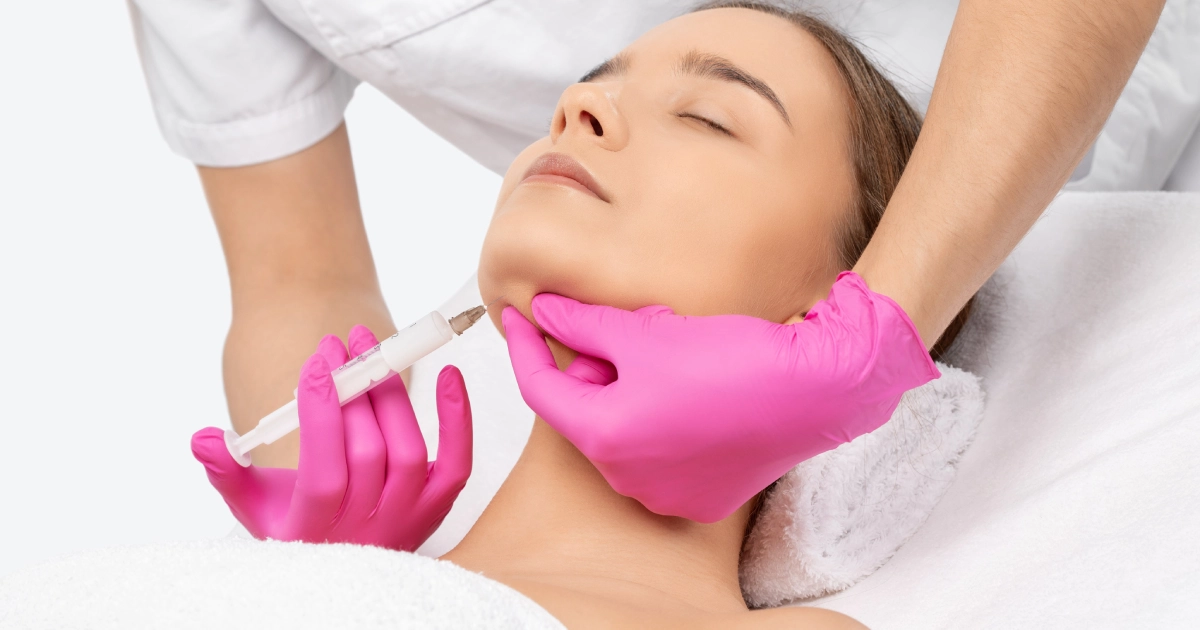

Finding yourself counting hairs on your comb lately? Starting to feel self-conscious about your hairline in photos? These concerns affect millions of men. Data reveals that about 65% of American men experience noticeable hair thinning by age 35, with that percentage rising dramatically to 85% by the time they turn 50.
Hair thinning in men follows predictable patterns that have been studied extensively by dermatologists and hair loss specialists. Understanding these stages can help you make informed decisions about hair restoration options before significant hair loss occurs.
At Kay Dermatology, we’ve helped countless men address hair loss at every stage, from early thinning to advanced balding patterns. The key to successful hair restoration often lies in understanding where you are in the process and taking action at the right time.
Male pattern baldness stages follow a well-documented progression known as the Norwood Scale, developed by Dr. James Hamilton and later refined by Dr. O’Tar Norwood. This classification system helps identify seven distinct stages of hair loss, each with specific characteristics and treatment implications.
Stage 1 represents little to no hair loss, with a juvenile hairline that may have slight recession at the temples. Most men in this stage don’t realize they’re beginning to experience hair thinning in men, making early intervention rare but highly effective when implemented.
Stage 2 shows the first clear signs of hair loss, with slight recession at the temples creating an “M” shape. The hairline begins pulling back from the ears, and some men notice their foreheads appearing larger than before. This stage represents the ideal time for preventive hair restoration treatments.
Stage 3 marks the beginning of significant cosmetic concern for most men. The receding hairline becomes significantly more visible, with the distinctive “M” formation becoming much more dramatic. Some men also begin developing a small bald spot at the crown. This stage represents the point where most men begin actively seeking treatment options.
Stages 4-5 show substantial hair loss, with the crown area expanding and the frontal hairline continuing to recede. The horseshoe pattern of remaining hair becomes apparent, though a bridge of hair typically still connects the front and back areas.
Stages 6-7 represent advanced hair loss patterns where only a band of hair remains around the sides and back of the head. While more challenging to treat, these stages can still benefit from modern hair restoration approaches, though expectations must be carefully managed.
The benefits of hair restoration vary significantly depending on when treatment begins, but every stage offers unique opportunities for improvement.
When hair restoration begins in stages 1-3, the results are often dramatically impressive. Existing hair follicles respond exceptionally well to treatment, becoming thicker, stronger, and more resilient. The abundant healthy follicles provide an excellent foundation for growth factor treatments, often leading to noticeable improvements within just a few months.
Starting treatment early allows for prevention of further loss while strengthening existing hair. PRP for male pattern baldness works by delivering concentrated growth factors directly to hair follicles, extending their growth phase and improving hair shaft diameter. This approach can effectively halt or significantly slow progression to more advanced stages.
Men in stages 3-4 often see substantial improvements from non-surgical hair restoration treatments. While these hair follicles may be damaged, they often still possess the potential to benefit from growth factor therapy. Treatment at this stage can restore noticeable density and coverage while preventing further loss.
Even men in stages 5-7 can benefit from modern advanced hair loss solutions. While complete restoration may not be possible, strategic treatment can improve the quality and density of remaining hair, create better coverage, and boost confidence significantly.
The best hair restoration for men often involves combination treatments that address multiple aspects of hair loss simultaneously. Growth factor injections stimulate dormant follicles, improve existing hair quality, and create optimal conditions for sustained improvement.
Hair restoration can be effective for many men, but the ideal candidates often include:
If you’re in the later stages of male pattern baldness, results are still possible, but treatment may take longer and focus on slowing loss while improving density in thinning areas. For personalized guidance, contact us at Kay Dermatology to explore the right plan for your needs.
During your consultation at Kay Dermatology, you’ll sit down with a provider who will take time to understand your hair loss journey and review your medical background. This conversation helps create a treatment approach that makes sense for your specific situation and goals.
The procedure involves drawing a small sample of your blood. It is then processed to extract natural growth factors, which are injected into thinning areas of your scalp. Treatments are comfortable and usually take about an hour.
Most men return to normal activities immediately after. There’s no downtime, making it convenient to fit into a busy schedule. Some mild swelling or tenderness may occur, but it fades quickly. Results are subtle and natural-looking, enhancing appearance without making it obvious.
While results vary, most clients notice new growth within 3–6 months. For best results, a series of treatments is recommended typically monthly for several months, followed by maintenance sessions. Maintaining consistent appointments is crucial for maximizing your hair restoration outcomes.
Watching your hairline change can be frustrating and impact how you feel about yourself, but there’s real hope no matter where you are in the process. Modern treatments like PRP therapy and growth factor injections offer men practical ways to address hair loss, promote new growth, and regain that sense of confidence without going under the knife.
If you’re considering hair restoration in Burbank, CA, the specialists at Kay Dermatology provide safe, effective treatments customized to your stage of hair loss.
